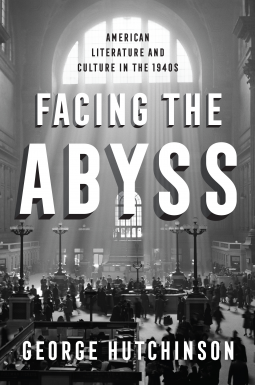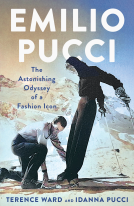Please wait... This may take a moment.
Facing the Abyss
American Literature and Culture in the 1940s
This title was previously available on NetGalley and is now archived.
Pub Date
Jan 23 2018
| Archive Date
Mar 27 2018
Description
Mythologized as the era of the “good war” and the “Greatest Generation,” the 1940s are frequently understood as a more heroic, uncomplicated time in American history. Yet just below the surface, a sense of dread, alienation, and the haunting specter of radical evil permeated American art and literature. Writers returned home from World War II and gave form to their disorienting experiences of violence and cruelty. They probed the darkness that the war opened up and confronted bigotry, existential guilt, ecological concerns, and fear about the nature and survival of the human race. In Facing the Abyss, George Hutchinson offers readings of individual works and the larger intellectual and cultural scene to reveal the 1940s as a period of profound and influential accomplishment.
Facing the Abyss examines the relation of aesthetics to politics, the idea of universalism, and the connections among authors across racial, ethnic, and gender divisions. Modernist and avant-garde styles were absorbed into popular culture as writers and artists turned away from social realism to emphasize the process of artistic creation. Hutchinson explores a range of important writers, from Saul Bellow and Mary McCarthy to Richard Wright and James Baldwin. African American and Jewish novelists critiqued racism and anti-Semitism, women writers pushed back on the misogyny unleashed during the war, and authors such as Gore Vidal and Tennessee Williams reflected a new openness in the depiction of homosexuality. The decade also witnessed an awakening of American environmental and ecological consciousness. Hutchinson argues that despite the individualized experiences depicted in these works, a common belief in art’s ability to communicate the universal in particulars united the most important works of literature and art during the 1940s. Hutchinson’s capacious view of American literary and cultural history masterfully weaves together a wide range of creative and intellectual expression into a sweeping new narrative of this pivotal decade.
Mythologized as the era of the “good war” and the “Greatest Generation,” the 1940s are frequently understood as a more heroic, uncomplicated time in American history. Yet just below the surface, a...
Description
Mythologized as the era of the “good war” and the “Greatest Generation,” the 1940s are frequently understood as a more heroic, uncomplicated time in American history. Yet just below the surface, a sense of dread, alienation, and the haunting specter of radical evil permeated American art and literature. Writers returned home from World War II and gave form to their disorienting experiences of violence and cruelty. They probed the darkness that the war opened up and confronted bigotry, existential guilt, ecological concerns, and fear about the nature and survival of the human race. In Facing the Abyss, George Hutchinson offers readings of individual works and the larger intellectual and cultural scene to reveal the 1940s as a period of profound and influential accomplishment.
Facing the Abyss examines the relation of aesthetics to politics, the idea of universalism, and the connections among authors across racial, ethnic, and gender divisions. Modernist and avant-garde styles were absorbed into popular culture as writers and artists turned away from social realism to emphasize the process of artistic creation. Hutchinson explores a range of important writers, from Saul Bellow and Mary McCarthy to Richard Wright and James Baldwin. African American and Jewish novelists critiqued racism and anti-Semitism, women writers pushed back on the misogyny unleashed during the war, and authors such as Gore Vidal and Tennessee Williams reflected a new openness in the depiction of homosexuality. The decade also witnessed an awakening of American environmental and ecological consciousness. Hutchinson argues that despite the individualized experiences depicted in these works, a common belief in art’s ability to communicate the universal in particulars united the most important works of literature and art during the 1940s. Hutchinson’s capacious view of American literary and cultural history masterfully weaves together a wide range of creative and intellectual expression into a sweeping new narrative of this pivotal decade.
Advance Praise
"Bringing together art, literature, philosophy, and music, Hutchinson has
created a kind of critical mosaic that produces insights that open up
the 1940s as a cultural field, grounded in the ungrounded processes of
art as incalculable experience. The juxtapositions of unconnected
figures induce in the reader a new vision of the era and new dimensions
of the authors and works discussed. It is a work of exceptionally deft
intellectual choreography, conducted with enviable precision and
concision. "
—Ross Posnock, Columbia University
"Bringing together art, literature, philosophy, and music, Hutchinson has created a kind of critical mosaic that produces insights that open up the 1940s as a cultural field, grounded in the...
Advance Praise
"Bringing together art, literature, philosophy, and music, Hutchinson has
created a kind of critical mosaic that produces insights that open up
the 1940s as a cultural field, grounded in the ungrounded processes of
art as incalculable experience. The juxtapositions of unconnected
figures induce in the reader a new vision of the era and new dimensions
of the authors and works discussed. It is a work of exceptionally deft
intellectual choreography, conducted with enviable precision and
concision. "
—Ross Posnock, Columbia University
Available Editions
| EDITION |
Other Format |
| ISBN |
9780231163385 |
| PRICE |
$37.00 (USD)
|
| PAGES |
416
|
Additional Information
Available Editions
| EDITION |
Other Format |
| ISBN |
9780231163385 |
| PRICE |
$37.00 (USD)
|
| PAGES |
416
|
Average rating from 3 members
Readers who liked this book also liked:
Emilio Pucci
Terence Ward; Idanna Pucci
History, Nonfiction (Adult)
Uprooted
Grace Olmstead
Biographies & Memoirs







